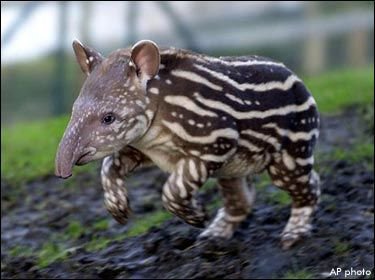Police State USA

Unmanned aerial vehicles have soared the skies of Afghanistan and Iraq for years, spotting enemy encampments, protecting military bases, and even launching missile attacks against suspected terrorists.
Now UAVs may be landing in the United States.
A House of Representatives panel on Wednesday heard testimony from police agencies that envision using UAVs for everything from border security to domestic surveillance high above American cities. Private companies also hope to use UAVs for tasks such as aerial photography and pipeline monitoring.
"We need additional technology to supplement manned aircraft surveillance and current ground assets to ensure more effective monitoring of United States territory," Michael Kostelnik, assistant commissioner at Homeland Security's Customs and Border Protection Bureau, told the House Transportation subcommittee.
Kostelnik was talking about patrolling U.S. borders and ports from altitudes around 12,000 feet, an automated operation that's currently under way in Arizona. But that's only the beginning of the potential of surveillance from the sky.
In a scene that could have been inspired by the movie "Minority Report," one North Carolina county is using a UAV equipped with low-light and infrared cameras to keep watch on its citizens. The aircraft has been dispatched to monitor gatherings of motorcycle riders at the Gaston County fairgrounds from just a few hundred feet in the air--close enough to identify faces--and many more uses, such as the aerial detection of marijuana fields, are planned.
That raises not just privacy concerns, but also safety concerns because of the possibility of collisions with commercial and general aviation aircraft.
"They're a legitimate user of the airspace and they need to play by the same rules as everyone else," Melissa Rudinger, vice president of regulatory affairs at the Aircraft Owners and Pilots Association, said in a telephone interview.
Pilots undergo extensive training on collision detection and avoidance. Planes that fly at night are required to have certain types of lights, for instance. Operating an aircraft near busy airports (in government parlance, "Class B" airports) requires a transponder that broadcasts its altitude. And during all flights that take place in poor weather or higher than 18,000 feet above sea level, the pilot must be in radio contact with controllers.
No such anti-collision rules apply to UAVs. Rudinger is concerned that UAVs--either remote-controlled or autonomous drones--will pose a safety threat to pilots and their passengers. She's not that worried about larger UAVs operated by the military that have sophisticated radar systems, but about smaller ones that have limited equipment and potentially inexperienced ground controllers.
"The FAA needs to define what is a UAV," Rudinger said. "And they need to regulate it just like they do any other aircraft, and integrate it into the system. The problem is the technology has advanced, and there are no regulations that talk about how to certify these aircraft, how to certify the operator, and how to operate in the national airspace system."
In other news:
New Linux look fuels old debate
XP and Vista to get new media player
Second coming of the V-Chip
Bright lights, big quake?
News.com Extra: Microsoft gets social
Video: Seismology turns to high tech
For its part, the FAA says it's created a UAV "program office" to come up with new rules of the sky. Preliminary standards for "sense and avoid" UAV avionics are expected in three to four years.
"Currently there is no recognized technology solution that could make these aircraft capable of meeting regulatory requirements for 'see and avoid,' and 'command and control,'" said Nick Sabatini, associate FAA administrator for aviation safety. "Further, some unmanned aircraft will likely never receive unrestricted access to (U.S. airspace) due to the limited amount of avionics it can carry because of weight, such as transponders, that can be installed in a vehicle itself weighing just a few ounces."
Complicating the question of how to deal with UAVs is the fact that there are so many different varieties of them. Some are essentially large model aircraft and weigh only a few ounces or pounds, while some military models are the size of a Boeing 737. Most are designed to sip fuel slowly, so they have long flight times and low airspeeds--meaning that they could be flying at the same altitude as a jet aircraft but at half the speed.
Egging on Congress and the FAA are manufacturers of UAVs, who see a lucrative market in domestic surveillance and aerial photography.
"It is quite easy to envision a future in which (UAVs), unaffected by pilot fatigue, provide 24-7 border and port surveillance to protect against terrorist intrusion," said Mike Heintz on behalf of the UNITE Alliance which represents Boeing, Lockheed Martin and Northrop Grumman. "Other examples are limited only by our imagination."
Copyright ©1995-2006 CNET Networks, Inc. All rights reserved.


0 Comments:
Post a Comment
<< Home